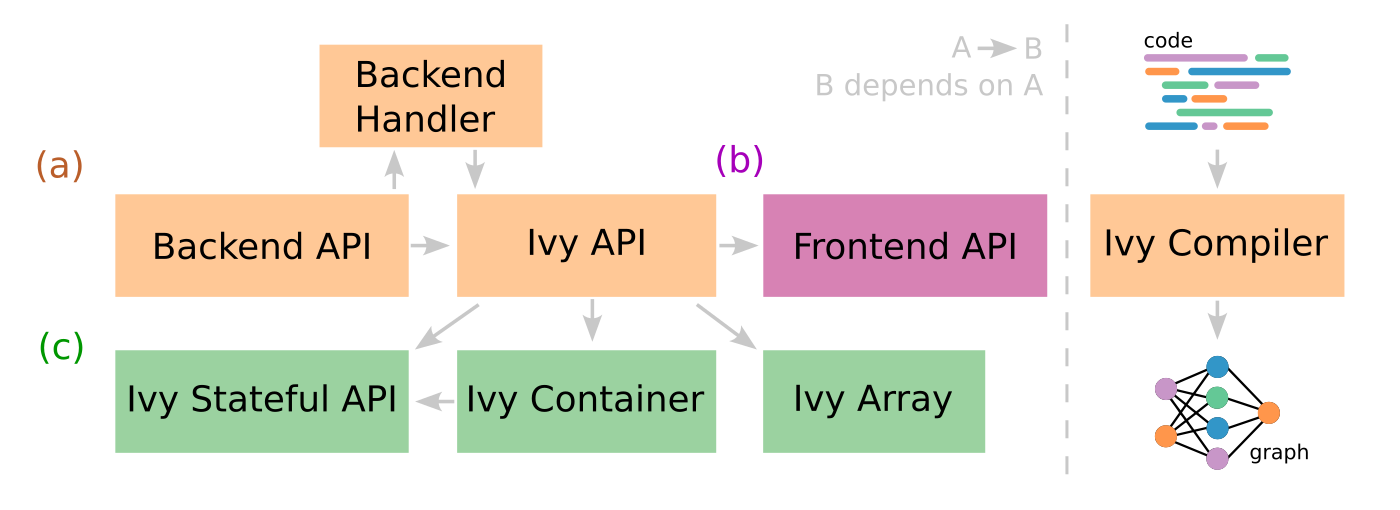Ivy as a Framework#
On the Building Blocks page, we explored the role of the Backend functional APIs, the Ivy functional API, the Backend handler, and the Tracer. These are parts labeled as (a) in the image below.
On the Ivy as a Transpiler page, we explained the role of the backend-specific frontends in Ivy, and how these enable automatic code conversions between different ML frameworks. This part is labeled as (b) in the image below.
So far, by considering parts (a) and (b), we have mainly treated Ivy as a fully functional framework with code conversion abilities. Ivy builds on these primitives to create a fully-fledged ML framework with stateful classes, optimizers, and convenience tools to get ML experiments running in very few lines of code.
Specifically, here we consider the ivy.Container class, the ivy.Array class and the stateful API.
These parts are labeled as (c) in the image below.

You may choose from the following upcoming discussions or click next.
Round Up
Hopefully, this has given you a good idea of how Ivy can be used as a fully-fledged ML framework.
Please reach out on discord if you have any questions!